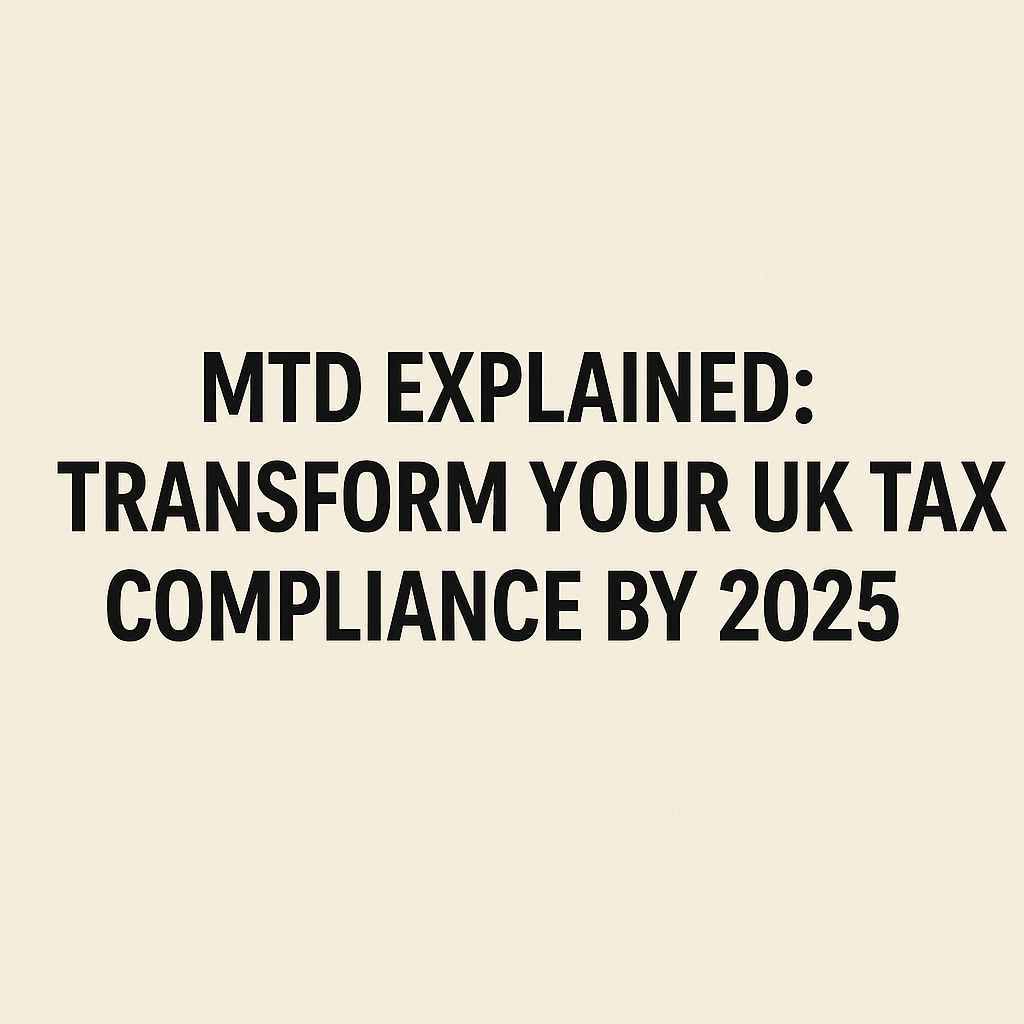
Making Tax Digital (MTD) is a UK government plan to modernise the tax system by moving it online. Under MTD, businesses and individuals maintain records on a computer or in the cloud and utilize specialized software to submit their tax information to HM Revenue & Customs (HMRC). The goal is to reduce mistakes, save time, and help taxpayers keep their tax affairs up to date.
In practice, this means no more filling in paper forms or typing into HMRC’s old online VAT system – instead, you use approved accounting software to log your sales and expenses and file your VAT and income tax data digitally.
By making tax “digital by default,” MTD aims to make it easier for individuals and businesses to get their taxes right and harder for them to get them wrong.
MTD started with Value Added Tax (VAT) and is now being extended to Income Tax and other taxes.
In this guide, we explain what MTD is, why it exists, who it affects, and what you need to do to comply — in simple language so a student with a good understanding of maths and computers can follow along.
The government introduced MTD to improve the way taxes are handled in the UK. By requiring digital record-keeping and filings, HMRC expects fewer errors and faster, more accurate tax returns.
For example, small mistakes on a VAT return or self-assessment form can cost the economy billions each year. MTD’s real-time, software-driven process aims to catch and correct errors early, so people file correctly the first time.

Key benefits include:
Challenges to consider:
Internet access: Reliable internet is essential. In rare cases, HMRC may grant exemptions to individuals who are unable to use digital tools.
MTD is being rolled out in phases:
| Tax Type | Who is Affected | Threshold | From | Key Requirement |
| Value Added Tax (VAT) | All VAT-registered businesses | All (previously >£85,000) | April 2019 (above £85k), April 2022 (all) | Keep VAT records digitally and file VAT returns using compatible software |
| Income Tax (Self Assessment, ITSA) | Self-employed individuals and landlords | >£50,000 (2026), >£30,000 (2027), >£20,000 (2028) | April 2026 onwards | Keep digital income/expense records; send quarterly updates; finalise tax via MTD software |
| Corporation Tax (planned) | Companies subject to CT | No threshold announced | Not set yet (delayed) | Keep digital accounts; make updates; file CT returns via MTD software |
All VAT-registered businesses must now comply. From April 2026 to 2028, self-employed individuals and landlords with an annual income above £ 20,000 will be gradually added. Partnerships will join later. Corporation Tax is planned but delayed.
From April 2019 (or 2022 for smaller businesses), MTD for VAT is mandatory.
Key steps:
MTD for VAT Requirements:
Important: As of November 2022, VAT returns must no longer be filed via the old HMRC website.
Starting April 2026, self-employed people and landlords will begin using MTD ITSA.
MTD for Income Tax Requirements:
If you run multiple businesses or have several rental properties, each needs to be tracked separately.
You must keep the same tax records as before, but in digital form.
| Record Category | What to Record |
| Business details | Business name, trading address, VAT registration number, and VAT scheme |
| VAT transactions | For each sale/purchase: date of supply, description, net amount, VAT rate, VAT amount |
| Adjustments/notes | Credit/debit notes, previous return corrections |
| Special items | Imports/exports, VAT-exempt items, VAT on expenses |
Your software should prompt you for this information.
Even minor issues in your filings can add up, and these common accounting mistakes show how quickly penalties can escalate if you’re not compliant.
MTD requires compatible software.
Options:
Check the HMRC list to confirm your software is MTD-compliant. Authorise it using your Government Gateway credentials.
If you’re not ready for full software migration yet, this guide on affordable tax software options will help you make the right call.
VAT:
Income Tax:
MTD changes how and when you report tax, not how much.
Deadlines:
Penalties:
Software helps avoid missing deadlines with reminders and automated submissions.
Bridging software facilitates a gradual transition.
If your current accountant isn't offering digital-first advice or helping you prepare for MTD, it might be time to consider switching accountants
MTD is expanding, but it is not yet a universal standard. Upcoming plans:
Eventually, MTD may include PAYE, Customs, and other taxes.
| Date | Tax Scheme | Who Becomes Mandated | Notes |
| April 2019 | MTD for VAT | VAT-registered businesses above £85,000 | First phase of MTD for VAT |
| April 2022 | MTD for VAT (all) | VAT-registered businesses below £85,000 | All VAT firms now join MTD |
| April 2026 | MTD for Income Tax | Self-employed & landlords >£50,000 | Quarterly updates & digital record-keeping |
| April 2027 | MTD for Income Tax | Income £30,000–£50,000 | The threshold lowered to £30k |
| April 2028 | MTD for Income Tax | Income £20,000–£30,000 | The threshold lowered to £20k |
| Future | MTD for Corporation Tax (planned) | All companies | No confirmed start date |
Making Tax Digital represents a major shift in UK tax compliance. It helps reduce errors, improve speed and transparency, and bring tax into the digital age.
Businesses should act early to choose compatible software, digitise records, and prepare for the deadlines ahead. The future of UK tax is digital, and MTD is a key step in that transformation.
If you’re unsure where to start, it helps to speak to an accountant who specialises in MTD and can walk you through next steps in plain English.
Yes, but you’ll also need bridging software that connects your spreadsheet to HMRC’s system. MTD rules require digital records to be submitted via MTD-compatible tools, and simply using Excel without this digital link is no longer compliant.
Failing to register or submit returns via MTD-compliant software can result in penalty points and fines. For VAT, repeated late submissions can trigger a £200 penalty. For income tax, similar late filing penalties apply under Self Assessment rules.
Yes, HMRC may grant exemptions if:
Apply in writing or through your tax agent to request an exemption.
Yes, starting from:
Landlords meeting these thresholds must keep digital records and submit quarterly updates under MTD for Income Tax (ITSA).
5. How do I know if my software is MTD-compatible?
HMRC provides an updated list of recognised MTD-compatible software on their website. Look for software that is authorised for your specific tax (VAT or Income Tax).
Popular options include Xero, QuickBooks, FreeAgent, Sage, and others. Verify the product details to ensure it supports both record-keeping and submission capabilities.